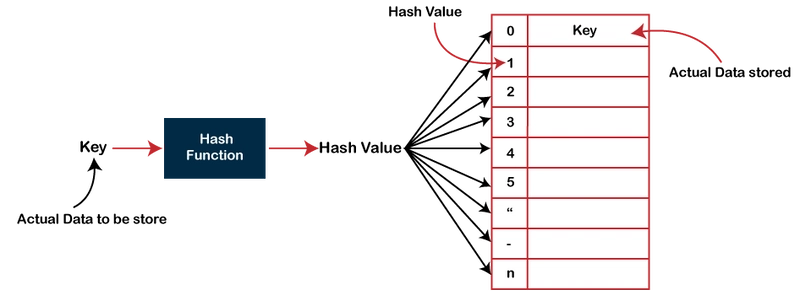Microservices and MVC in a NestJS Project
Microservices and MVC in a NestJS Project NestJS is a progressive Node.js framework that provides a solid structure for building scalable applications. It supports both Microservice architecture and MVC (Model-View-Controller) pattern, allowing developers to choose the best fit for their use case. 1. Microservices in NestJS What are Microservices? Microservices architecture allows an application to be broken down into multiple independent services, each handling a specific responsibility. These services communicate using lightweight mechanisms such as HTTP, WebSockets, or messaging brokers (Kafka, RabbitMQ, etc.). How to Implement Microservices in NestJS? NestJS provides built-in support for microservices via the @nestjs/microservices module. Step 1: Install Required Dependencies npm install @nestjs/microservices Step 2: Create a Microservice Define a microservice that listens on a specific transport (e.g., TCP). import { NestFactory } from '@nestjs/core'; import { MicroserviceOptions, Transport } from '@nestjs/microservices'; import { AppModule } from './app.module'; async function bootstrap() { const app = await NestFactory.createMicroservice(AppModule, { transport: Transport.TCP, // Using TCP transport options: { host: '127.0.0.1', port: 3001 }, }); await app.listen(); console.log('Microservice is running on port 3001'); } bootstrap(); Step 3: Create a Microservice Handler Inside a service, define message patterns. import { Controller } from '@nestjs/common'; import { MessagePattern } from '@nestjs/microservices'; @Controller() export class MathController { @MessagePattern({ cmd: 'sum' }) // Message-based communication sum(data: number[]): number { return data.reduce((a, b) => a + b, 0); } } Step 4: Create a Client (API Gateway or Another Microservice) The client will send messages to the microservice. import { Controller, Get } from '@nestjs/common'; import { Client, ClientProxy, Transport } from '@nestjs/microservices'; @Controller() export class AppController { @Client({ transport: Transport.TCP, options: { host: '127.0.0.1', port: 3001 } }) private client: ClientProxy; @Get('sum') async getSum(): Promise { return this.client.send({ cmd: 'sum' }, [3, 5]).toPromise(); } } Benefits of Microservices in NestJS ✅ Scalability – Each service scales independently. ✅ Decoupling – Services can be deployed separately. ✅ Flexibility – Services can be written in different programming languages. 2. MVC in NestJS What is MVC? MVC (Model-View-Controller) is a design pattern that separates application logic into three layers: Model (M): Handles data and business logic. View (V): Responsible for UI rendering. (NestJS usually does not use this since it's more backend-focused.) Controller (C): Handles requests and responses. How to Implement MVC in NestJS? Step 1: Create a Controller Controllers handle HTTP requests and return responses. import { Controller, Get } from '@nestjs/common'; @Controller('users') export class UsersController { @Get() getUsers(): string { return 'List of users'; } } Step 2: Create a Service The service contains business logic and interacts with the database. import { Injectable } from '@nestjs/common'; @Injectable() export class UsersService { getAllUsers(): string[] { return ['Alice', 'Bob', 'Charlie']; } } Step 3: Use the Service in the Controller Inject the service into the controller to fetch data. import { Controller, Get } from '@nestjs/common'; import { UsersService } from './users.service'; @Controller('users') export class UsersController { constructor(private readonly usersService: UsersService) {} @Get() getUsers(): string[] { return this.usersService.getAllUsers(); } } Step 4: Register Components in a Module A module groups related components together. import { Module } from '@nestjs/common'; import { UsersController } from './users.controller'; import { UsersService } from './users.service'; @Module({ controllers: [UsersController], providers: [UsersService], }) export class UsersModule {} Comparison: Microservices vs. MVC in NestJS Feature Microservices MVC Architecture Distributed (multiple services) Monolithic (single codebase) Scalability High (each service scales independently) Limited (entire app scales together) Communication Message-based (Kafka, RabbitMQ, etc.) Direct function calls (synchronous) Deployment Services deployed separately Deployed as a single unit Best For Large, scalable applications Small to medium-sized applications Conclusion Use Microservices if you need scalability, independent deployments, or different services for different teams. Use MVC if you're

Microservices and MVC in a NestJS Project
NestJS is a progressive Node.js framework that provides a solid structure for building scalable applications. It supports both Microservice architecture and MVC (Model-View-Controller) pattern, allowing developers to choose the best fit for their use case.
1. Microservices in NestJS
What are Microservices?
Microservices architecture allows an application to be broken down into multiple independent services, each handling a specific responsibility. These services communicate using lightweight mechanisms such as HTTP, WebSockets, or messaging brokers (Kafka, RabbitMQ, etc.).
How to Implement Microservices in NestJS?
NestJS provides built-in support for microservices via the @nestjs/microservices module.
Step 1: Install Required Dependencies
npm install @nestjs/microservices
Step 2: Create a Microservice
Define a microservice that listens on a specific transport (e.g., TCP).
import { NestFactory } from '@nestjs/core';
import { MicroserviceOptions, Transport } from '@nestjs/microservices';
import { AppModule } from './app.module';
async function bootstrap() {
const app = await NestFactory.createMicroservice<MicroserviceOptions>(AppModule, {
transport: Transport.TCP, // Using TCP transport
options: { host: '127.0.0.1', port: 3001 },
});
await app.listen();
console.log('Microservice is running on port 3001');
}
bootstrap();
Step 3: Create a Microservice Handler
Inside a service, define message patterns.
import { Controller } from '@nestjs/common';
import { MessagePattern } from '@nestjs/microservices';
@Controller()
export class MathController {
@MessagePattern({ cmd: 'sum' }) // Message-based communication
sum(data: number[]): number {
return data.reduce((a, b) => a + b, 0);
}
}
Step 4: Create a Client (API Gateway or Another Microservice)
The client will send messages to the microservice.
import { Controller, Get } from '@nestjs/common';
import { Client, ClientProxy, Transport } from '@nestjs/microservices';
@Controller()
export class AppController {
@Client({ transport: Transport.TCP, options: { host: '127.0.0.1', port: 3001 } })
private client: ClientProxy;
@Get('sum')
async getSum(): Promise<number> {
return this.client.send({ cmd: 'sum' }, [3, 5]).toPromise();
}
}
Benefits of Microservices in NestJS
✅ Scalability – Each service scales independently.
✅ Decoupling – Services can be deployed separately.
✅ Flexibility – Services can be written in different programming languages.
2. MVC in NestJS
What is MVC?
MVC (Model-View-Controller) is a design pattern that separates application logic into three layers:
- Model (M): Handles data and business logic.
- View (V): Responsible for UI rendering. (NestJS usually does not use this since it's more backend-focused.)
- Controller (C): Handles requests and responses.
How to Implement MVC in NestJS?
Step 1: Create a Controller
Controllers handle HTTP requests and return responses.
import { Controller, Get } from '@nestjs/common';
@Controller('users')
export class UsersController {
@Get()
getUsers(): string {
return 'List of users';
}
}
Step 2: Create a Service
The service contains business logic and interacts with the database.
import { Injectable } from '@nestjs/common';
@Injectable()
export class UsersService {
getAllUsers(): string[] {
return ['Alice', 'Bob', 'Charlie'];
}
}
Step 3: Use the Service in the Controller
Inject the service into the controller to fetch data.
import { Controller, Get } from '@nestjs/common';
import { UsersService } from './users.service';
@Controller('users')
export class UsersController {
constructor(private readonly usersService: UsersService) {}
@Get()
getUsers(): string[] {
return this.usersService.getAllUsers();
}
}
Step 4: Register Components in a Module
A module groups related components together.
import { Module } from '@nestjs/common';
import { UsersController } from './users.controller';
import { UsersService } from './users.service';
@Module({
controllers: [UsersController],
providers: [UsersService],
})
export class UsersModule {}
Comparison: Microservices vs. MVC in NestJS
| Feature | Microservices | MVC |
|---|---|---|
| Architecture | Distributed (multiple services) | Monolithic (single codebase) |
| Scalability | High (each service scales independently) | Limited (entire app scales together) |
| Communication | Message-based (Kafka, RabbitMQ, etc.) | Direct function calls (synchronous) |
| Deployment | Services deployed separately | Deployed as a single unit |
| Best For | Large, scalable applications | Small to medium-sized applications |
Conclusion
- Use Microservices if you need scalability, independent deployments, or different services for different teams.
- Use MVC if you're building a small to medium monolithic application with a structured architecture.
NestJS provides built-in support for both architectures, allowing developers to choose the right approach for their needs.












































































































































































![[The AI Show Episode 142]: ChatGPT’s New Image Generator, Studio Ghibli Craze and Backlash, Gemini 2.5, OpenAI Academy, 4o Updates, Vibe Marketing & xAI Acquires X](https://www.marketingaiinstitute.com/hubfs/ep%20142%20cover.png)




























































































































![[DEALS] The Premium Learn to Code Certification Bundle (97% off) & Other Deals Up To 98% Off – Offers End Soon!](https://www.javacodegeeks.com/wp-content/uploads/2012/12/jcg-logo.jpg)

![From drop-out to software architect with Jason Lengstorf [Podcast #167]](https://cdn.hashnode.com/res/hashnode/image/upload/v1743796461357/f3d19cd7-e6f5-4d7c-8bfc-eb974bc8da68.png?#)








































































































.png?#)


































_Christophe_Coat_Alamy.jpg?#)


.webp?#)





































































































![Apple Considers Delaying Smart Home Hub Until 2026 [Gurman]](https://www.iclarified.com/images/news/96946/96946/96946-640.jpg)
![iPhone 17 Pro Won't Feature Two-Toned Back [Gurman]](https://www.iclarified.com/images/news/96944/96944/96944-640.jpg)
![Tariffs Threaten Apple's $999 iPhone Price Point in the U.S. [Gurman]](https://www.iclarified.com/images/news/96943/96943/96943-640.jpg)




































































































































